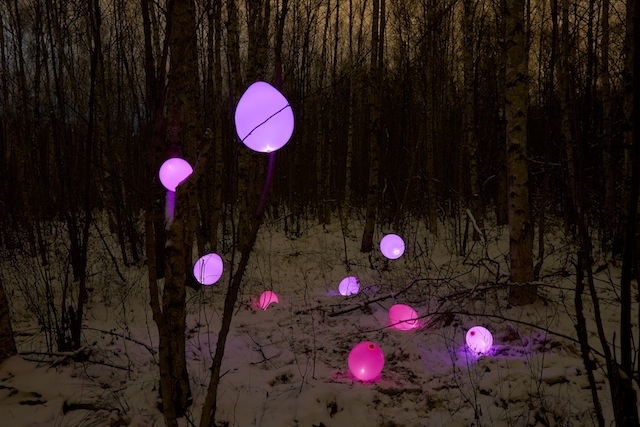Art Sümer, Istanbul, 10 March – 22 April
If a gesture of reconciliation is too little, too late, can it still salvage something? Could the attempt itself be the start of a different dialogue, at least – one that reforges a relationship, without expecting forgiveness? Turkish-American artist Bahar Yürükoğlu seems to suggest so: her latest solo exhibition tentatively explores a yearning for a new relationship with the natural world. In it, she captures her own attempt at initiating a human–nature dialogue, the photographic evidence of which feels both intimate enough to be an act of personal penitence and conceptual enough to communicate a universal need. A hand shyly grasps the stem of a plant for a cross-species handshake in Untitled (2016), while in another untitled work, from 2017, sharply manicured fingers reach for an equally spindly flower, the two mirroring each other in longing and deadliness. Ranging from installation to photography to video, Yürükoğlu’s works are more typically marked by Technicolor gradients, presenting geometric shapes of manmade material inserted into natural landscapes and site-specific installations reminiscent of light-refracting glaciers. This time, fresh from a residency in Antarctica (her second trip there), Yürükoğlu bookends six photographs that utilise her familiar visual vocabulary with the two aforementioned, more naturalistic photographs on one end, and one fully computer-generated, jarring image on the other.
Such insistence on working with the limits of the physical world also seems to highlight what fellow dwellers of Yürükoğlu’s home cities and many others have likely ceased to see when looking at nature
Several of Yürükoğlu’s prints here look at first glance like manipulated photos: they include a triangle, as in Inversion (2016), and multicoloured lines, as in A Drawing (2016), transposed on otherwise unremarkable photos of a bare forest covered in greying snow. But these enigmas are actually physical objects, placed in the forest and then photographed; the works check us in our instinctive assumption that their visual out-of-placeness is evidence of digital interference. Such insistence on working with the limits of the physical world also seems to highlight what fellow dwellers of Yürükoğlu’s home cities – Washington, DC, Boston, New York and Istanbul – and many others have likely ceased to see when looking at nature. A sense of wonder, for one – stoked, tellingly, through a harmonious amalgam of the manmade and the natural. In documenting her modest but original intervention, Yürükoğlu’s photographs quietly urge us to attempt our own similar reconnections, reminding of that hidden sublime only to be found through and within the natural world. Transfixion (2016), in which a woman basks in refracted multicoloured sunlight, and Subversion (2016), in which a magenta filter and prismatic lens-flare transform an image of a bare forest by way of a colourful aura, more explicitly illustrate this psychological bond. Should we choose to alleviate that bond’s severing through technology – instead of the challenging but authentic work of reconciliation with the real thing – the outcome, captured in New Composition (2017), says it all: it features a clip-art skull and potted palm tree, floating before a neon gradient – its artificial hues an eyesore after the subtlety of Transfixion’s natural rainbow; its vector graphics underwhelmingly flat after the perspectival depth of Inversion’s real forest.
This small solo show feels promising, but sketchlike in scope and content; in comparison to the artist’s 2016 exhibition Flow Through – which included a site-specific Plexiglas installation, Arctic soundscapes and video – these nine prints, varying from A4 to A0, come across as interim offerings. Given this sparseness, getting the curatorial basics right is a necessity. The Karaköy neighbourhood suffers from frequent construction, so the drab natural light inside Art Sümer is the price for the privacy its frosted glass facade affords; despite this, little attention seems to have been paid to the individual lighting of each work, even though the visual impact of and audience engagement with dark, glossy prints like The Forest Party (2016) depends upon a thoughtful consideration of its reflective properties. Nonetheless, Maybe I’d like to be like you compactly and pensively suggests the kind of vulnerable, honest self-questioning on our part that must necessarily preclude any reconciliation in the human–nature relationship. This holds a conceptual and topical weight that begs for the expansive executions of the artist’s past shows.
First published in the Summer 2017 issue of ArtReview Asia
